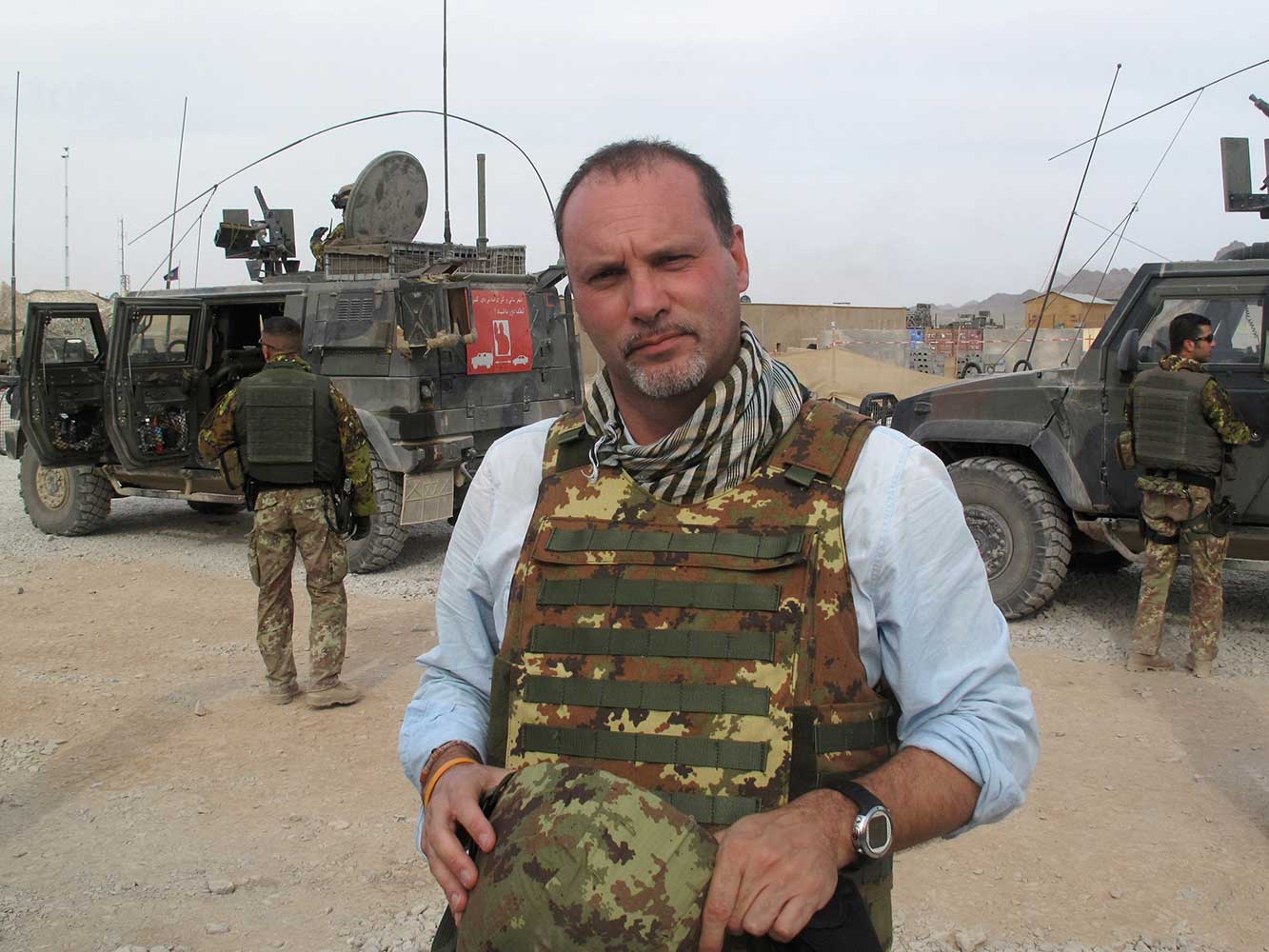Born on 25th of June 1967 in Sorengo, Lugano (Switzerland), Alfredo Macchi has long lived in Milan and from 2006 he settled in Rome. After the Liceo Classico G. Parini, he attended the VI dell’Ifg two years, the Institute for Education in Journalism in Milan. In 1990 the examination by a professional journalist and the departure for New York where he worked as a freelance for several Italian newspapers.
E ‘degree in Political Science from the University of Milan with a degree in sociology, entitled “The Digital Revolution and television journalism”. He has worked with various newspapers (Corriere della Sera, L’Espresso and Radio Popolare). In 1991 in Rome he worked in Rai Uno for the transmission “The extra Rai Uno” directed by Gaspare Barbiellini Amidei. In July 1992 he was hired atMediaset, first at TG4 then at News Mediaset As special envoy he has followed some of the most important events of recent years. He is currently deputy foreign editor of News Mediaset, leading the night news on Tgcom24.As a photographer for several years he has worked with various humanitarian organizations in Africa, Asia, Europe, South America. [Official Website]
What’s in your camera bag?
Normally I travel with two camera bodies, a Canon 7D and an old Canon 30D, two machines to read but very reliable, even under extreme conditions. I carry tree objectives: a 10-22 1: 3.5 – 4.5 which is the one I prefer, a 17-55 1: 2.8 which is good for all situations and a 70-200 1: 4 in the case of subjects distant. Then I carry a flash, that I rarely use, only as support light, battery chargers, a cleaning kit, a box to protect memory cards and a portable hard disk to back up, an adapter for electric charge, a military compass, a flashlight with batteries, a mini tripod, plastic bags to protect against dust and rain
What is the one thing you couldn’t live without?
A flashlight with batteries saved me in many situations where there was no electricity. In addition to this I have always with me a current accumulator which allows me to recharge the batteries with an autonomy of two or three days. In crisis areas the main problems are given by the lack of electric energy and telephone connection. After that comes the problem of food and finally that of sleep, but with a lot sheet or sleeping bag I can sleep anywhere. I’ve even sleep on the street or on the roof of some building.
What are some of the details that you find essential for your style of bags?
The most important thing is that my luggage is light and rather small. Work for days in the hot with a heavy backpack is tiring. So I try to bring only the essentials and what I could hardly obtain locally. I often have a lot of space allocated it to drinking water and food bars.
What are the important things for protecting your camera gear?
I use a padded backpack with compartments specifically designed for cameras and objectives. Then I take with me many plastic bags to avoid especially the fine dust and sand of the desert. Finally, I have an airtight box rain-proof for the memory cards.
Can you give me the essential carry kit when traveling the globe (bags, accessories etc.)?
The key thing on the road is a pair of comfortable and sturdy shoes. then comes the photographic equipment, with everything needed for repairs: small screwdriver, duct tape, bellows and brushes to dust. I mostly travel to remote areas or crisis locations where find something is often impossible. Essential is a sleeping bag, medicines, food bars, tablets to disinfect water and a mosquito net. Unfortunately, when I went to Haiti to cover the 2008 earthquake, I didn’t have it with me and I was sleeping in the open, so I brought home a beautiful form of malaria as souvenir.








